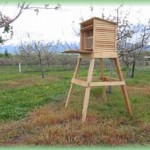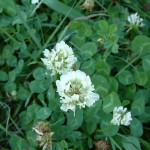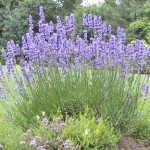Press Release, August 25, 2008
Coalition against BAYER Dangers (Germany)
Pesticides cause mass death of bees
Germany: Charge against Bayer´s Board of Management
The German Coalition against Bayer Dangers today brought a charge against Werner Wenning, chairman of the Bayer Board of Management, with the Public Prosecutor in Freiburg (south-western Germany). The group accuses Bayer of marketing dangerous pesticides and thereby accepting the mass death of bees all over the world. The Coalition introduced the charge in cooperation with German beekeepers who lost thousands of hives after poisoning by the pesticide clothianidin in May this year.
Since 1991 Bayer has been producing the insecticide Imidacloprid, which is one of the best selling insecticides in the world, often used as seed-dressing for maize, sunflower, and rape. Bayer exports Imidacloprid to more than 120 countries and the substance is Bayer´s best-selling pesticide. Since patent protection for Imidacloprid expired in most countries, Bayer in 2003 brought a similarly functionning successor product, Clothianidin, onto the market. Both substances are systemic chemicals that work their way from the seed through the plant. The substances also get into the pollen and the nectar and can damage beneficial insects such as bees.
The beginning of the marketing of Imidacloprid and Clothianidin coincided with the occurrence of large scale bee deaths in many European and American countries. Up to 70 per cent of all hives have been affected. In France alone approximately 90 billion bees died within ten years, reducing honey production by up to 60%.
Harro Schultze, attorney of the Coalition against Bayer Dangers said: “The Public Prosecutor needs to clarify which efforts BAYER undertook to prevent a ban of Imidacloprid and Clothianidin after sales of both substances were stopped in France. We´re suspecting that Bayer submitted flawed studies to play down the risks of pesticide residues in treated plants”. In France Imidacloprid has been banned as a seed dressing for sunflowers since 1999 and in 2003 was also banned as a sweetcorn treatment. The Comité Scientifique et Technique, convened by the French government, declared that the treatment of seeds with Imidacloprid leads to significant risks for bees. Bayer´s application for Clothianidin was also rejected by French authorities.
“Bayer´s Board of Management has to be called to account since the risks of neonicotinoids such as Imidacloprid and Clothianidin have now been known for more than ten years. With an annual turnover of nearly 800 million Euro neonicotinoids are among Bayer´s most important products. This is the reason why Bayer, despite serious environmental damage, is fighting against any application prohibitions”, says Philipp Mimkes, speaker of the Coalition against Bayer-dangers. The Coalition demands that Bayer withdraw all neonicotinoids from the market worldwide.
The accusation of flawed studies is confirmed by the Canadian Pest Management Regulatory Agency (PMRA) which judged on Bayer´s Clothianidin application: “All of the field/semi-field studies, however, were found to be deficient in design and conduct of the studies and were, therefore, considered as supplemental information only. Clothianidin may pose a risk to honey bees and other pollinators, if exposure occurs via pollen and nectar of crop plants grown from treated seeds”. PRMA adds: “It should also be noted that Clothianidin is very persistent in soil, with high carry-over of residues to the next growing season. Clothianidin is also mobile in soil.”
In May 2008 German authorities blamed clothianidin for the deaths of millions of honeybees. The German Federal Office of Consumer Protection and Food Safety (BVL) suspended the registration for eight pesticide seed treatment products, including Clothianidin and Imidacloprid, on maize and rape.
The case is filed by the Public Prosecutor in Freiburg (Tel: +49-(0)761 2050) under the file number 520 UJs 1649/08
more information:
· The Guardian: Germany bans chemicals linked to bee devastation www.guardian.co.uk/environment/2008/may/23/wildlife.endangeredspecies
· Sierra Club urges EPA to suspend nicotinyl insecticides: http://www.sierraclub.org/biotech/whatsnew/whatsnew_2008-07-30.asp
· Press Release of the Research Centre for Cultivated Plants (German): http://www.jki.bund.de/cln_044/nn_813794/DE/pressestelle/Presseinfos/2008/1605__BienensterbenClothianidin.html__nnn=true
· Bee-keepers and environmental groups demand prohibition of pesticide "Gaucho"
· French Institutes Finds Imidaproclid Turning Up in Wide Range of Crops
· 2003 report from the "Comité Scientifique et Technique de l’Etude Multifactorielle des Troubles des Abeilles" http://agriculture.gouv.fr/IMG/pdf/rapportfin.pdf







